This post is part two of an ongoing series exploring the science and ethnobotany of plants found throughout the Sonoran Desert region. The first four plants in this series are the Mexican trees Taxodium mucronatum (ahuehuete/Montezuma cypress), Randia echinocarpa (papache/papachi), Forchhammeria watsonii (jito), and Olneya tesota (opo/ironwood). For each plant, we are sharing a blog post in both Spanish and English, and a poem, all written by Horticulturist Emmanuel in our Botany Department. English translations are provided by Desert Museum staff. Hear Emmanuel recite the poem to gorgeous video footage of the plant over at our Instagram account. Now, let’s learn about the papachi, a tree with a healing fruit!
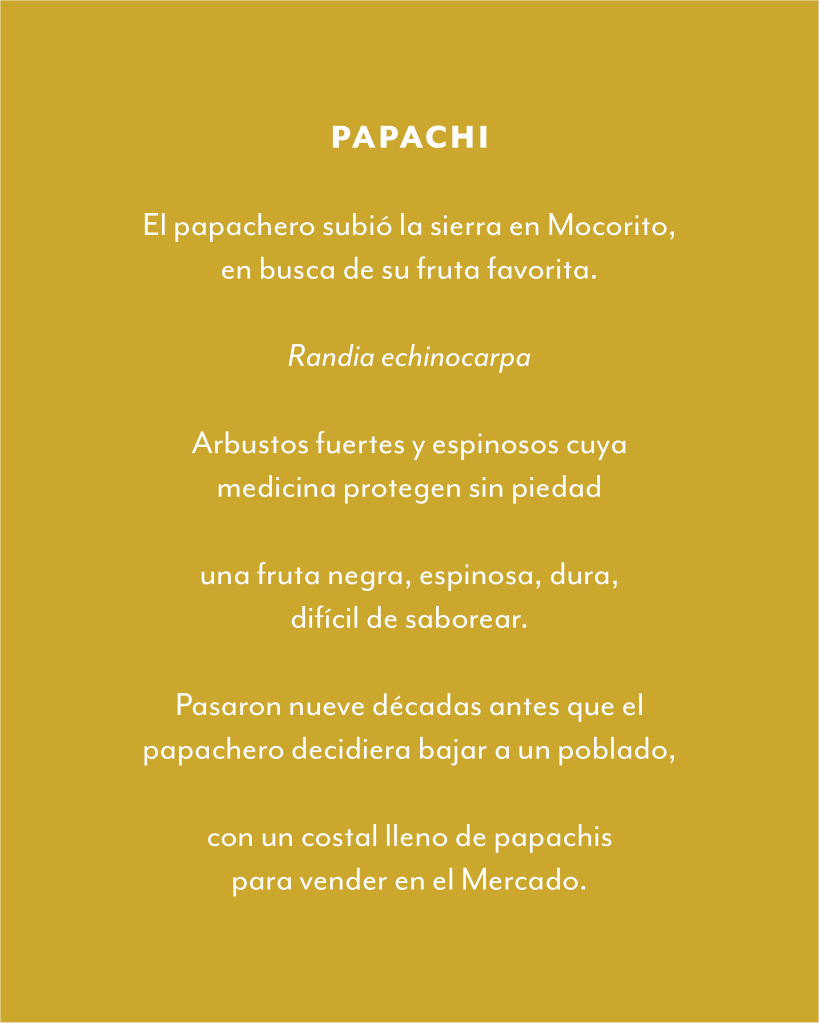

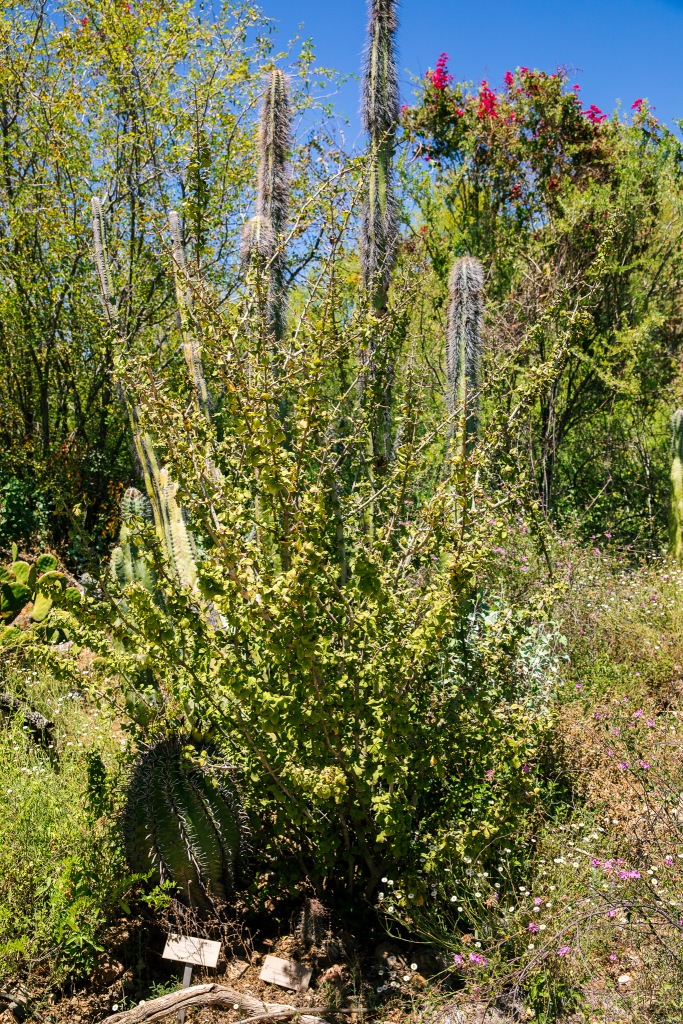

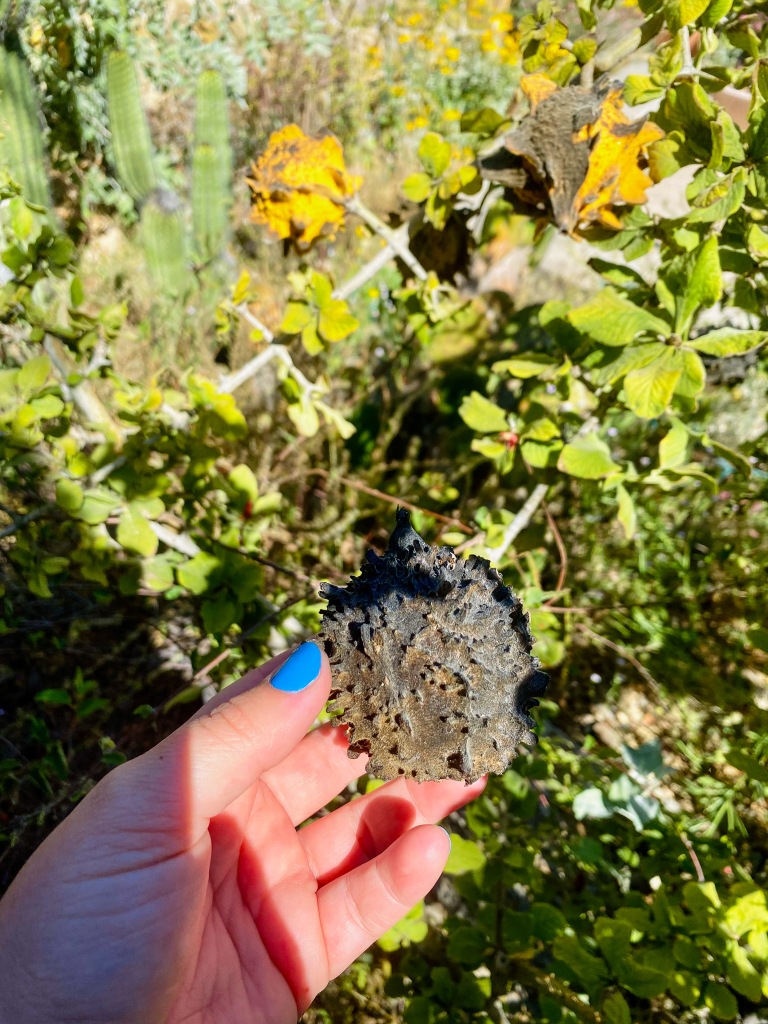
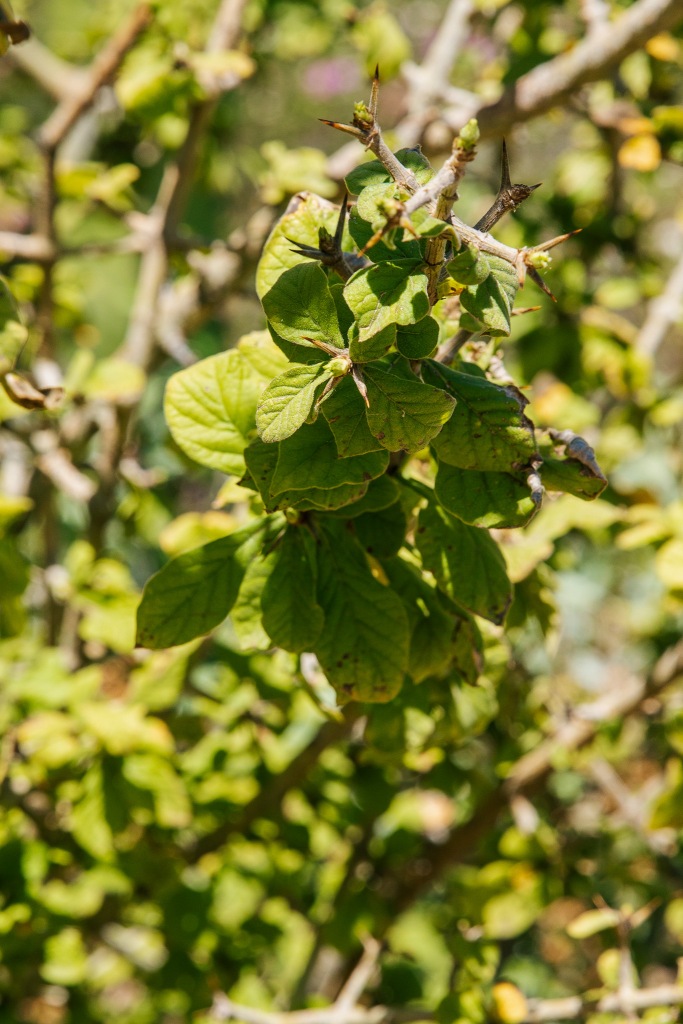
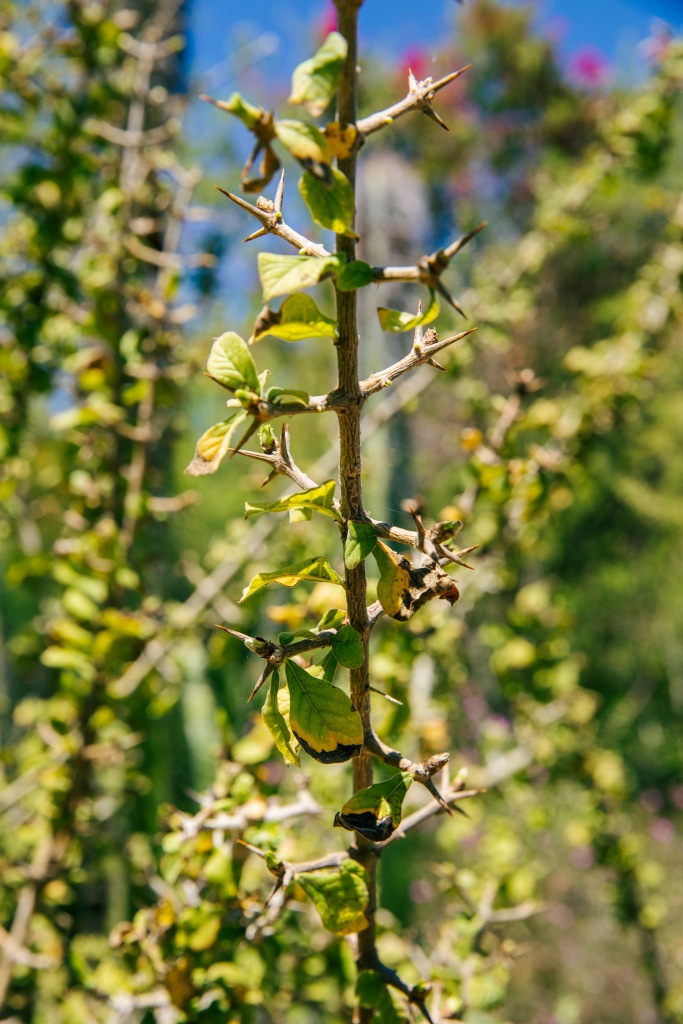
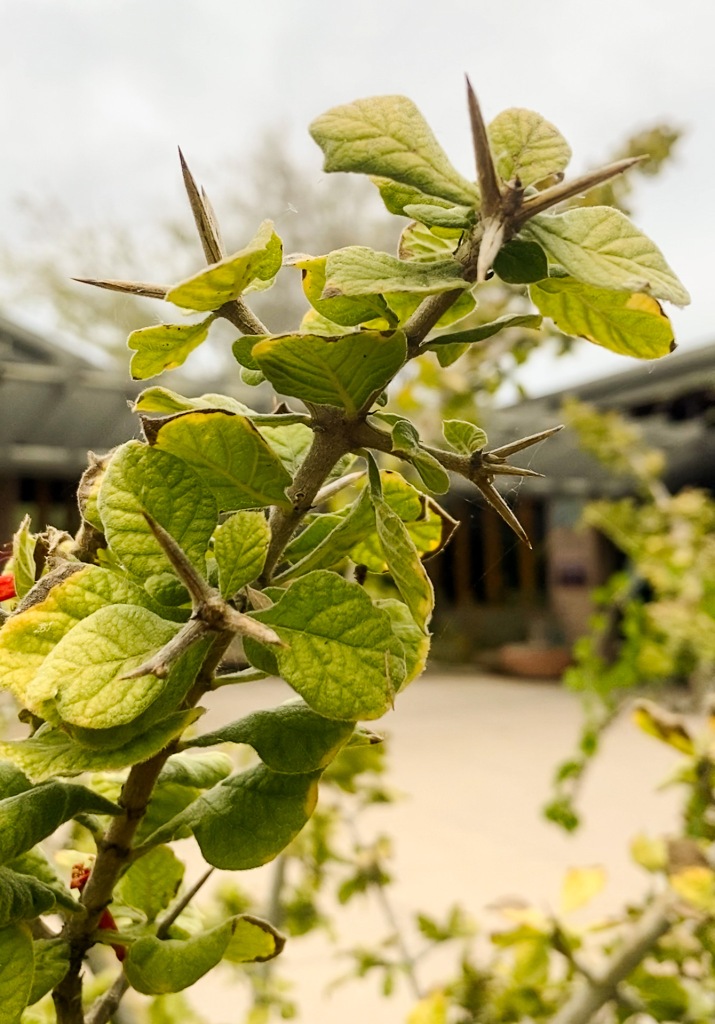

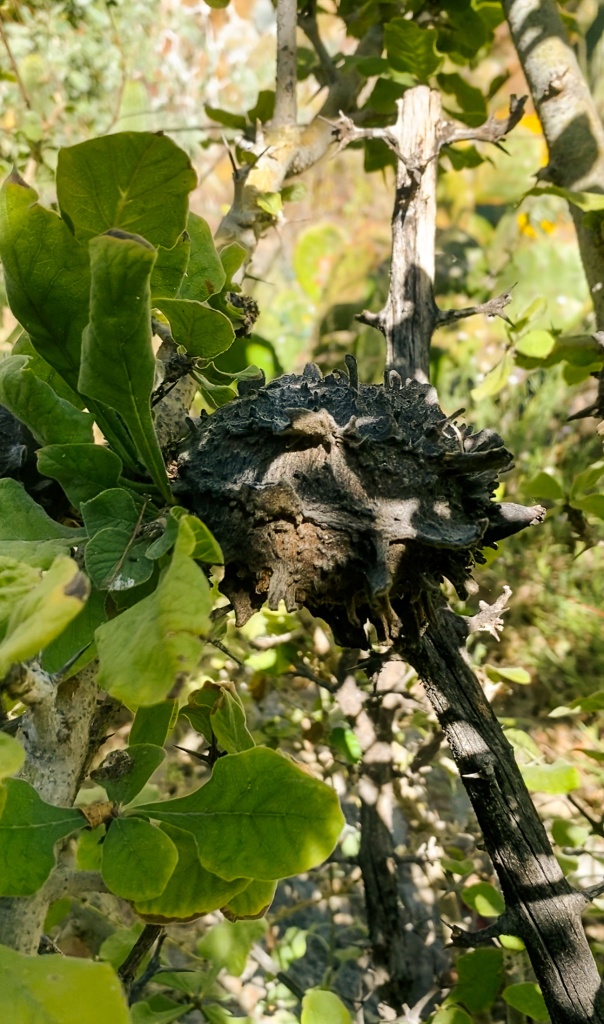
Papachi
Se puede encontrar la fruta de Randia echinocarpa en ciertos mercados mexicanos, al precio más bajo. Algunos autores consideran “moderno” el uso del papachi; o granjel, o kakawari, o asagola, o xacua, o crucillo, o tecoloche como planta medicinal debido a que no hay información escrita al respecto sino desde mediados del siglo XX. Sin embargo, hablar sobre papachis en el sur de Sonora, Sinaloa o Chihuahua siempre será buen tema de conversación.
Morfología y filogenia
Pertenece a la familia Rubiaceae y se caracteriza por presentar flores y frutos relativamente grandes, flores amarillas-naranja claro, unisexuales y normalmente son plantas dioicas, es decir, que existen plantas femeninas y plantas masculinas; aunque pueden ser poligamodioicas si presentan flores hermafroditas. Es un arbusto grande o árbol pequeño, sus ramas son bastante rígidas y cada una termina con cuatro espinas muy afiladas. Las hojas ovaladas opuestas permanecen durante todo el año, excepto en el noroeste de México, donde pueden ser caducifolias. El fruto es una baya subglobosa de entre 5 y 10 cm de diámetro, está recubierto de protuberancias irregulares y al madurar puede tornarse amarillo o negro. Dentro de la fruta se encuentran numerosas semillas rodeadas por una pulpa negra.
Fitoquímica
A raíz de la herbolaria mexicana, se ha caracterizado una variedad de moléculas propias de la fruta del papache, como extractos antioxidantes de metanol, ácido linoleico, ácido palmítico, β-sitosterol, manitol, etc. También las melaninas purificadas de la fruta, o las sustancias que tiñen de negro a la pulpa, muestran actividad anti-degenerativa.
Etnobotánica
Existe un pueblo cerca de Choix, Sinaloa, con el nombre de Bajosori y significa en el agua del papache. Quizá si uno visita ese lugar, obtenga todo lo que hay que saber sobre esta especie tan particular de planta medicinal. Las poblaciones de papache están distribuidas por la costa el Pacífico Mexicano, por tanto, varias culturas prehispánicas conocen y han usado la planta para diversos fines. Se bebe té de hojas y frutas para tratar la malaria, diabetes, cáncer, infecciones gastrointestinales y de vías urinarias, malestares del pulmón y de riñón. Mucha gente de antes disfruta el sabor y comen papaches por placer, mientras que otros preparan un brebaje azul, proveniente de la pulpa, con actividad alucinógena.
—
Papachi: English Translation
The fruit of Randia echinocarpa can be found at an inexpensive price in certain Mexican markets. Papachi is also known as granjel, kakawari, asagola, xacua, crucillo, and tecoloche. Some authors consider the medicinal use of papachi to be a more recent development since there is no written record of it until the mid-20th century. Papachi is always a good topic of conversation in southern Sonora, Sinaloa, and Chihuahua.
Morphology and Phylogeny
It belongs to the Rubiaceae family and is characterized by having relatively large flowers and fruits. Their flowers are light yellow-orange and typically unisex as the papachi is normally dioecious (i.e., a plant will either have all female or all male flowers). However, it can occasionally be polygamodioecious if the plant has flowers that are hermaphroditic (with both male and female parts). It is a large shrub or small tree. Its branches are quite rigid and each one ends with four very sharp thorns. The oval shaped opposite leaves remain year-round, except in northwestern Mexico where they may be deciduous. The fruit is a subglobose berry between 5 and 10 cm in diameter and is covered with irregular protuberances. When ripe it can turn yellow or black. Inside the fruit there are numerous seeds surrounded by black pulp.
Phytochemistry
As a result of Mexican herbalism, a variety of papachi fruit molecules have been characterized, such as antioxidant extracts of methanol, linoleic acid, palmitic acid, β-sitosterol, mannitol, etc. Also, the melanins purified from the fruit, or the substances that stain the pulp black, show a cicatrizing, anticarcinogenic and antioxidant activity.
Ethnobotany
There is a town near Choix, Sinaloa with the name Bajosori which means “in the papachi water.” Perhaps visiting that place would help a person learn everything there is to know about this very particular species of medicinal plant. Papachi populations are distributed along the Mexican Pacific coast, therefore, several pre-Hispanic cultures know and have used the plant for various purposes. Tea made from the leaf and fruit is drunk to treat malaria, diabetes, cancer, gastrointestinal and urinary tract infections, and lung and kidney ailments. Many people through time have enjoyed the flavor and eaten papachis for pleasure, while others have experienced its hallucinogenic properties by preparing a blue concoction using the pulp.
2 Comments Add yours